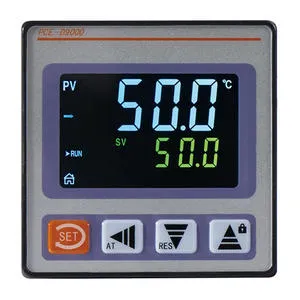A temperature controller is a device used to control temperature by adjusting the output of a heating or cooling device to maintain a set temperature range. The working principle of the temperature controller is to measure the temperature and compare it with the set temperature range, and then control the output of the heating or cooling equipment according to the comparison result.

Temperature controllers typically consist of three main parts: sensors, controllers, and actuators. The sensor measures the temperature, the controller processes the signal from the sensor and compares it to a set temperature range, and the actuator controls the output of the heating or cooling device.
Sensors are often the heart of a temperature controller. It could be a thermocouple, a thermistor, or an infrared sensor, etc. When the sensor measures the temperature, it will generate an electrical signal, which will be sent to the controller.
The controller is the brains of the temperature controller. It takes the signal sent by the sensor and compares it with the set temperature range. If the temperature exceeds the set range, the controller will send a signal to the actuator to control the output of the heating or cooling equipment. Controllers can also have other functions such as alarming, data logging, and communication.
The actuator is the output part of the temperature controller. It can be a heating wire, a compressor or an electric valve, etc. The role of the actuator is to control the output of the heating or cooling equipment according to the instructions of the controller to maintain the set temperature range.
Overall, a temperature controller is a very important piece of equipment that can play a key role in industrial, medical, food processing, and more. By measuring temperature and controlling the output of heating or cooling equipment, temperature controllers can ensure product quality and safety and increase production efficiency.